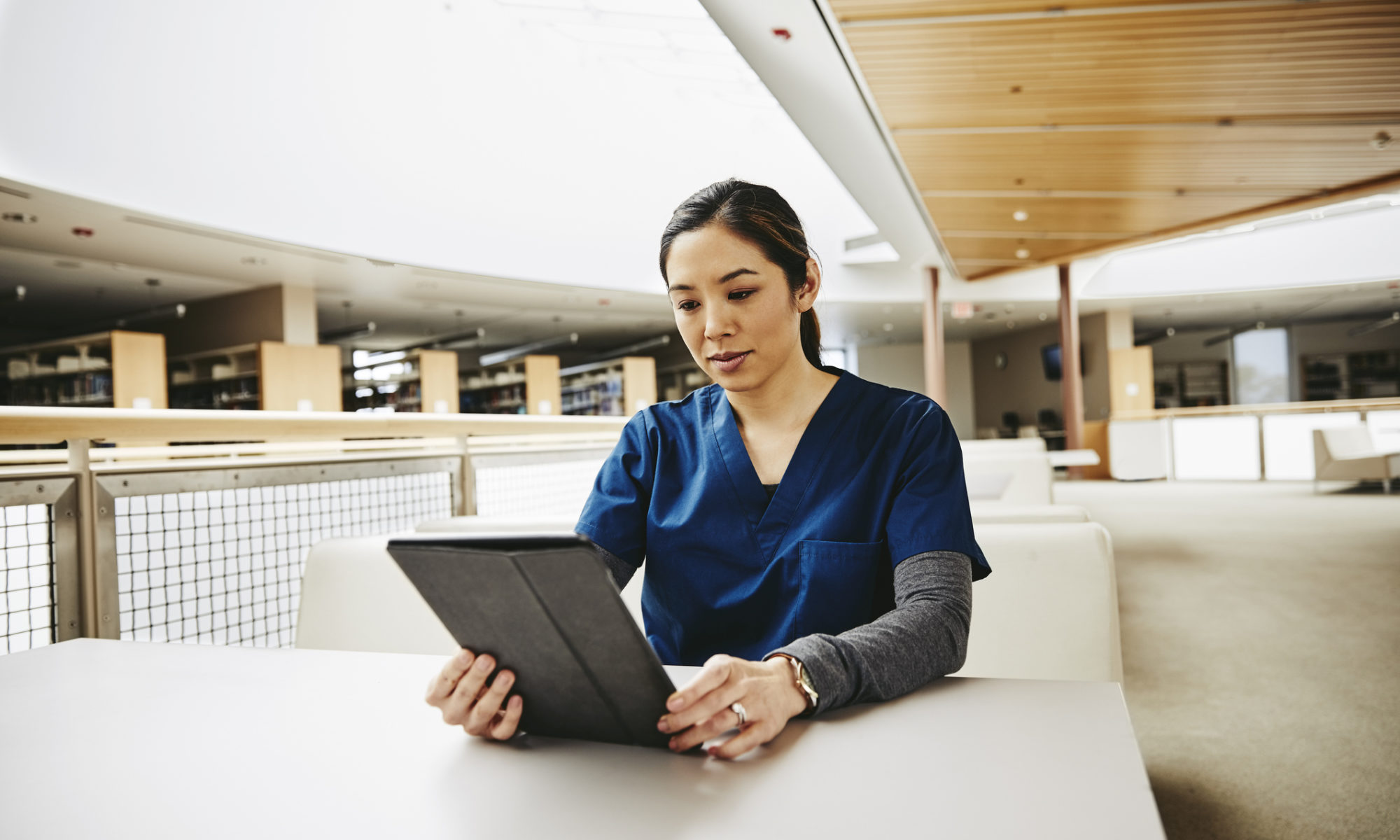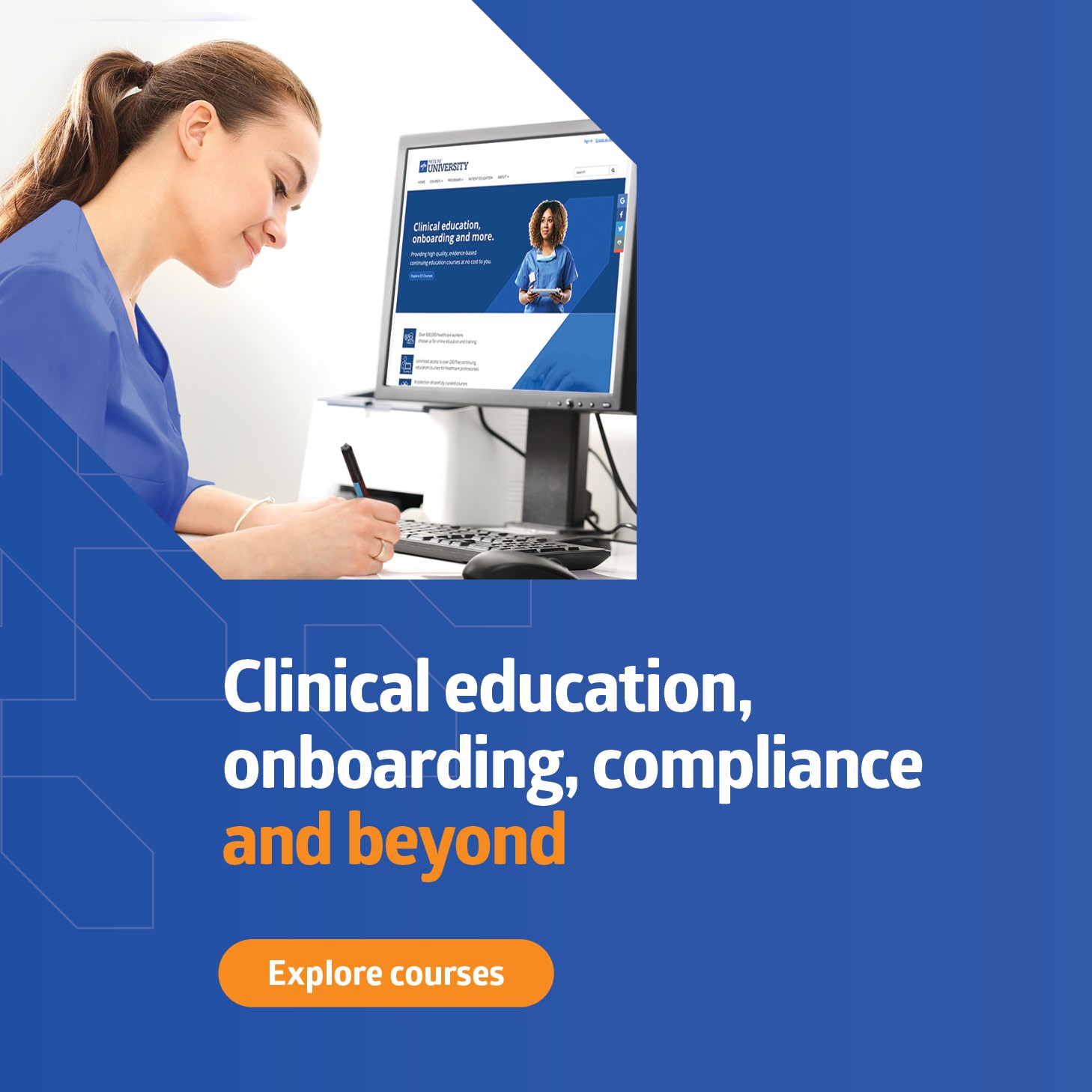Adapting education to the new way clinicians work

Safe patient handling program delivers education where and when clinicians need it
By Medline Newsroom Staff | January 28, 2021
Clinicians are used to having access to hands-on, in person training where they can touch and see in order to learn. But the pandemic has changed things dramatically, limiting care providers access to educators and hands-on methods of learning.
Medline Clinical Resource Manager Christine Ninchich has seen this first hand with Uplift, a comprehensive training program on falls prevention, early mobility and safe patient handling. Just before the start of 2020, Uplift took a hands-on approach, relying on both theory-based lectures and simulations to educate nurses.
To meet the needs of a global pandemic, Uplift quickly shifted to a virtual environment. The transition was made just in time to help nurses at Carson Tahoe Regional Medical Center, an acute care facility in Nevada. They started using Uplift at the start of 2020.
“COVID changed how we conducted our day-to-day work, but what we found is we still wanted to move forward with the Uplift program, because we did not want to delay what was best for our patients. In an effort to do so, we had to think outside of the box and Medline had to think outside of the box,” said Jenna Clark, ICU nursing manager at Carson Tahoe Regional Medical Center.
Adapting simulation-based learning
While transitioning the theory based portion of the program proved easy, changing the simulation-based education required a lot more effort.
“Within medicine, you need to touch, feel and act out to understand concepts, and this is especially true with safe patient handling. You want to practice and apply what you learned to real-life scenarios before practicing on a human being,” Ninchich said.
To make the simulation-based training work in a virtual environment, Ninchich restructured all the lessons so that they can be facilitated through conversations and/or presented in a case study format that participants can walk through.
“In nursing school, you do a lot of case studies and you get a lot of patient case scenarios that you have to talk through to understand why we do a certain step, and how those steps connect with each other,” Ninchich said. “We followed that style when adapting our learning to ensure we are still offering that value to those we serve in healthcare.”
Enabling learning on-the-go
To further educate clinicians virtually, Ninchich and her team developed an application for their educational offerings. The app, known as OneSource, houses all the educational training for Uplift and has a livestreaming feature that enables nurses to access live sessions on-the-go.
“Our team loved the fact that they could be in the comfort of their home and be able to be part of this education and the training. They loved the fact that they may not have had to drive 45 minutes to an hour for training at the hospital. It was very convenient and it was very flexible,” said Clark.
The greater motive behind providing training and making it easily accessible to team members, is to minimize falls among patients and protect caregivers from injuries.
“We really like having the Uplift program part of our daily practice, because we know at the end of the day, we’re doing what’s best for our patients and we’re protecting our staff and we’re ultimately advocating for safe patient care. I think the Uplift program will continue day-by-day to enhance what we do and enhance our patients’ recovery and their outcomes, and that makes us happy,” Clark concludes.
Watch how Uplift is making a difference at Carson Tahoe today.
Medline Newsroom Staff
Medline Newsroom Staff
Medline's newsroom staff researches and reports on the latest news and trends in healthcare.
